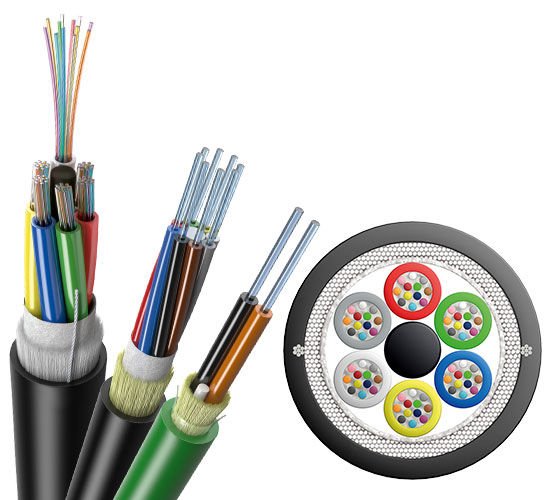POF - Polymer Optical Fiber
POF - Polymer Optical Fiber

Polymer Optical Fiber
With polymer optical fibers (POF), both the fiber core and the cladding is manufactured from a polymer. Superior flexibility (high alternate bending loads with smaller bending radiuses), connection and transmission technology that is less expensive than silica-based systems, and simple assembly in the field are key advantages of polymer optical fibers.
- 100% final inspection to verify optical attenuation in high-volume production
- Economical connector systems and transmitters/receivers
- Fast, straightforward assembly technology
- Superior flexibility (high alternate bending loads with smaller bending radiuses)
- Can be assembled in the field (prior experience is useful but not required)
- We can also supply the various tools required
Range of products and services
POF Product portfolio
- Link lengths up to 70 m, up to 150 m with suitable active components
- Temperature range: −40 °C to +85 °C, up to 105 °C with other cladding material
- Bandwidth-length product: >10 MHz × 100 m
@ 650 nm - Attenuation: <160 dB/km @ 650 nm
- Very broad spectrum of cable types
- Extensive assembly options
POF Product properties
- PMMA fiber core
- Fluoropolymer cladding
- Stable behavior in harsh environmental conditions
- Chemical resistance
- Suitable for use with drag chains
- Assembly with all standard connector types
- Can be assembled in the field
POF Ordering options
- Connector and assembly options for indoor and outdoor use
- Suitable for use with drag chains
- Media resistance
- Flame-retardant
- Pre-assembled
- Halogen-free with UL approval
- Profinet
- Buffer tube colors for multicore POF cables
- Buffered fibers with printed identification
- High NA available for higher power coupling
Fields of use
- Data transmission
- Sensor technology
- Automotive
Applications
Other Products
Further information
WEINERT Fiber Optics performs a 100% final inspection to verify optical attenuation on all POF cables in high-volume production. This enables us to guarantee first-class quality for our products. Measuring attenuation on complete cable drums (250 and 500 m) is a particular challenge, due to the high optical attenuation of the POF. WEINERT uses a measurement system specially developed for this purpose with an extremely high attenuation budget at 650 nm.
The maximum application temperature for standard POF is limited to 85 °C by the cladding material. By using a different cladding material, thermal stability can be increased to 105 °C. However, this also increases the kilometric attenuation slightly. The PMMA core material is the limiting factor for even higher temperatures.
The numerical aperture of the fibers can be changed by using other cladding materials. High-NA POFs, i.e. fibers with a higher increased numerical aperture, permit higher power coupling in the fiber. Increasing the NA results in a lower bandwidth, however.
Contact
Please contact us for further information. We look forward to your inquiry.
Europe, Africa, and Asia (excl. China)
Phone +49 36764-81-100
Email sales-europe@weinert-industries.com
China
Phone +86
519-8988-7783
Email sales-china@weinert-industries.com
North and South America
Phone +1
757-258-4805
Email sales-americas@weinert-industries.com
